Mount Damavand Basic Facts
Article by Mr. Ardeshir Soltani
Mount Damavand General Facts & Info
Mount Damavand, the highest volcano in Asia, is one of the most remarkable natural landmarks of Iran. Rising 5,671 meters (18,606 feet) above sea level, it is the tallest peak in the country and the Middle East. Damavand is located in the central part of the Alborz mountain range, close to the southern coast of the Caspian Sea in northern Iran. With its distinctive cone-shaped summit and commanding presence, the mountain is not only a geographical wonder but also a cultural symbol deeply rooted in Persian history, mythology, and literature.

Photo by A. Soltani
Located in the Alborz Mountain Range near the Caspian Sea and just 80 km northeast of Tehran, Damavand stands as Iran’s highest peak and the tallest volcano in Asia. With its nearly perfect conical shape and a snow-capped summit visible from up to 250 km away on clear days, Damavand is not only an extraordinary natural landmark but also a cultural symbol in Persian history and mythology, representing endurance, strength, and national pride.
Diverse Landscapes and Surrounding Wonders
The ecological diversity of Damavand is remarkable. Its slopes range from lush forests at lower elevations to alpine meadows and harsh high-altitude terrain near the summit. Natural features such as glaciers (Yakhar, Sioleh, and Dobi Sel) and sulfur vents highlight its volcanic nature. The climate is shaped by both the moist Caspian influence to the north and the drier central plateau to the south, creating striking contrasts in the surrounding landscapes. Beyond the peak, attractions such as the Larijan Thermal Hot Springs and the pristine Lar National Park invite visitors to enjoy the area’s natural beauty, wildlife, and rich biodiversity.
Recognition and Global Significance
At 5,671 meters (18,606 feet) above sea level, Damavand is the highest mountain in Iran and the Middle East, and one of the most prominent peaks worldwide with a topographic prominence of 4,667 meters (15,312 feet). Its striking profile has made it a symbol of natural grandeur, while its enduring presence continues to inspire poets, artists, and travelers. As a designated natural heritage site, Damavand remains a source of national identity and international recognition.

By Views of the Earth
A Natural Treasure of Iran
From its snow-covered summit and unique ecosystems to its cultural significance in Persian tradition, Mount Damavand stands as a true natural treasure of Iran. Its beauty, prominence, and symbolic role make it a landmark admired both nationally and internationally, embodying the spirit and heritage of the Iranian landscape.

Photo by Ardeshir Soltani
Mount Damavand: Basic Facts
Essential information about Mount Damavand, Iran.
General Information
- Height: 5,671 m (18,606 ft) – tallest mountain in Iran and the Middle East.
- Location: Central Alborz Mountains, Mazandaran Province, about 70–80 km northeast of Tehran.
- Coordinates: 35°57′20″N 52°06′36″E.
- Nearest Airports: Tehran’s Mehrabad and IKA International Airports.
- Parent Range: Alborz Mountains, near the Caspian Sea.
Geological Status
- Mountain Type: Stratovolcano.
- Status: Dormant volcano.
- Last Major Eruption: Estimated about 7,300 years ago.
- Volcanic Activity: Sulfur gas vents still visible near the summit.
- Listing: Member of the Volcanic Seven Summits (V7S).
Ranking & Prominence
- Highest peak in Iran and the Middle East.
- Tallest volcano in Asia.
- One of the most prominent peaks in the world (prominence: 4,667 m / 15,312 ft).
Names & Alternate Spellings
- Persian (Farsi): Koh-e Damavand, Donbalvand, Dood Koh, Qolleh Damavand, Dive Sepid, Koh-e Ghaf.
- English: Mount Damavand, Damavand Peak, Volcano Damavand, Damavand Volcano.
- Alternate Spellings: Damawand, Demavand, Demavend, Donbavand.
Cultural Significance
- Important symbol in Persian mythology, literature, and folklore.
- Represents endurance, resilience, and national pride.
Historical Notes
- Unrecorded ascents likely in ancient times.
- First recorded climb: 1837 by W.T. Thomson.
Resources
- Damavand Info – most informative resource.
- Mount Damavand Guide – updated travel and mountain information.
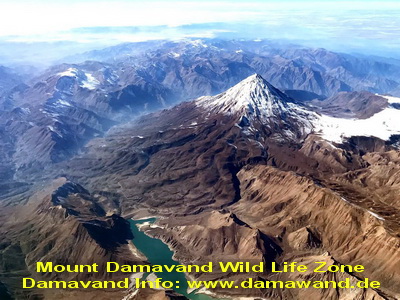
Damavand Mountain Facts & Figures
A concise fact and figures for Damavand in Iran, covering general information, key facts and tips.A detailed overview of Mount Damavand, highlighting its impressive physical attributes and its status as the highest peak in Iran and a key member of the Volcanic Seven Summits. It covers essential practical details such as its location near Tehran, the available climbing routes, and nearby airports, while also noting its dormant volcanic activity and historical eruption timeline. Additionally, the description touches on Damavand's cultural significance in Persian literature and its symbolic representation of resilience and strength, making it a comprehensive guide for trekkers and nature enthusiasts.
Quick Facts about Damavand
- Volcanic Age: Formed during the Holocene Epoch, approximately 10,000 years ago.
- Volcanic Activity: Last major eruption about 7,300 years ago; currently dormant with visible fumaroles and sulfur vents.
- Features: Snowcapped cone, small summit crater, glaciers, hot springs, sulfur deposits, and travertine formations.
- Climate: Humid continental, with hot summers, cold winters, and mild transitional seasons. Average annual temperature around 9.6°C.
- Cultural Significance: A sacred mountain in Persian mythology and literature, symbolizing strength and endurance. Some legends link it with Noah’s Ark.
- Wildlife Protection: Recognized as a protected zone by the Iranian government for its ecological importance.
- Scientific Research: Studied by institutions such as the University of Tehran, with focus on its glaciers and the impact of climate change.
- Recognition: Tallest peak in Iran and the Middle East; tallest volcano in Asia; part of the Volcanic Seven Summits (V7S).
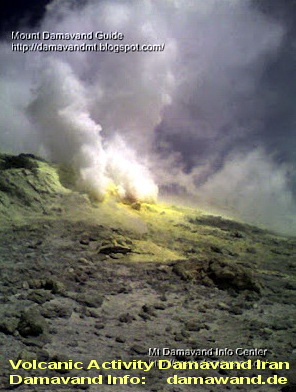
Volcanic Activity of Mount Damavand, Iran
Environmental Concerns
Mount Damavand, as Iran’s national natural symbol, faces environmental challenges such as overgrazing, littering, and unsustainable tourism. Since 2002, it has been listed as a protected natural heritage site under the Iranian Environmental Protection Agency. Local communities, NGOs, and environmentalists continue to advocate for stronger conservation measures, including official recognition of a “Damavand National Day” to raise awareness and preserve this unique landmark for future generations.
Geography and Location
Damavand rises to 5,671 meters (18,606 ft) in the central Alborz Mountains, about 70–80 km northeast of Tehran. Its snowy summit can be seen from distances of up to 250 km on clear days. The mountain overlooks the Caspian Sea to the north and the arid central plateau of Iran to the south, offering panoramic views across diverse landscapes.
Summary
Mount Damavand is not only the highest peak in Iran but also a cultural and ecological treasure. With its unique geological history, mythological importance, and environmental significance, Damavand stands as a symbol of natural grandeur and national pride. As Asia’s highest volcano, it continues to inspire scientists, poets, and nature lovers alike.

Is Mount Damavand the Highest Volcano in Asia?
Rising to 5,670 meters (18,600 feet) with a topographic prominence of 4,667 meters (15,312 feet), Mount Damavand is officially recognised as the tallest volcano in Asia and the 12th most prominent peak in the world. Some sources, such as Volcanolive and Summitpost, have raised questions about whether certain peaks in the Kunlun Mountains of Tibet could surpass Damavand in height. These debates largely revolve around how a “true volcano” is defined, especially in terms of prominence. Despite the discussion, Damavand’s status as an iconic natural landmark and symbol of Iran remains undisputed.
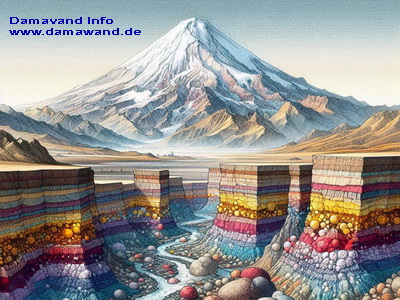
Flora and Fauna of Mount Damavand
Damavand’s slopes are home to a surprisingly diverse ecosystem shaped by altitude and climate. On the lower slopes, where conditions are milder and wetter, vegetation thrives. Juniper trees, shrubs, and a wide range of wildflowers create colourful landscapes, especially in spring and early summer. Higher up, the environment grows harsher and only hardy alpine plants and grasses survive.
Wildlife is equally varied. The foothills and mid-altitudes host wild goats, foxes, hares, and numerous bird species, including eagles, hawks, and smaller songbirds. Reptiles and amphibians are also common in these areas. At higher elevations, fewer animals endure the extreme conditions, though rare sightings of wolves, brown bears, and smaller mammals add to the mountain’s mystique. This unique mix of flora and fauna reflects how life adapts to Damavand’s changing climates and altitudes, making it both an ecological treasure and a natural wonder.

Mount Damavand and Mount Fuji: A Comparison
Mount Damavand in Iran and Mount Fuji in Japan are two famous volcanoes that look alike but are very different. Damavand is 5,670 meters high, the tallest peak in the Middle East. It is a dormant volcano that has not erupted for more than 7,000 years. In Persian culture and stories, Damavand is a strong national symbol.
Mount Fuji, at 3,776 meters, is shorter but better known around the world. It is still an active volcano, with its last eruption in the early 1700s. Fuji is not only a popular climbing spot but also an important symbol in Japanese art, religion, and culture.
Both mountains have a perfect cone shape and are loved for their beauty. They show the strong link between nature and culture in their countries and attract visitors from everywhere.
Fuji or Damavand? How to Tell the Difference
On the internet, some pictures of Mount Fuji are wrongly called Mount Damavand. The mistake is easy to spot: Fuji has a lake and towns near its base, but Damavand does not.
Because of their similar cone shape, many people compare the two. Some even call Fuji the “little sister of Damavand.” Still, each mountain has its own place in history and culture and is loved in both Iran and Japan.

Mount Fuji with a Lenticular Cloud Cap

Mythology of Damavand Mountain
Mount Damavand is at the heart of Iranian myths and legends. This famous mountain appears in many old tales and poems, making it a symbol of strength and identity in Persian culture. Two of the most famous stories linked to Damavand are the legend of Arash the Archer and the tale of Zahhak the Dragon King.
Arash the Archer
Arash (Āraš-e Kamāngīr) is one of the most beloved heroes in Iranian mythology. During a war between Persia and Turan, both sides agreed to settle their border through a test. Arash climbed to the summit of Mount Damavand and shot an arrow with all his strength. Legend says the arrow flew for an entire day before landing near the Amu Darya River, marking the new border. Arash gave his life for this act of sacrifice, and his story is remembered as a symbol of courage and devotion to the homeland. Some even say his spirit can still be felt on the slopes of Damavand.

Zahhak: The Dragon King
Another well-known legend tied to Damavand is the story of Zahhak, an evil king described in Ferdowsi’s epic Shahnameh. Zahhak had snakes growing from his shoulders, which demanded human brains as food, bringing terror to the people. The hero Fereydun rose against him, defeated him, and chained him deep inside a cave on Mount Damavand. It is said that the mountain’s smoke and rumblings are signs of Zahhak still struggling in his prison.
Through these stories, Damavand is seen not just as a mountain, but as a symbol of sacrifice, resistance, and the triumph of good over evil.
Arash the Archer – Persian Version
In Persian sources, Arash is described as a hero from the army of King Manuchehr. After the war with Turan, he was chosen to shoot an arrow from Damavand to define the border between Persia and Turan. Arash gave his life in this act, and the arrow is said to have landed far to the east. Places near the landing spot, such as a walnut tree and surrounding valleys, are still associated with his legend. Arash remains a symbol of bravery, self-sacrifice, and national pride in Iranian culture.
Key Points About Arash
- Also called: Arash Kamangir, Arash the Archer, Āraš-e Kamāngīr
- Famous for his legendary long-distance arrow shot
- Symbolizes courage, patriotism, and self-sacrifice
- Celebrated in festivals such as Tirgan, a traditional Iranian holiday
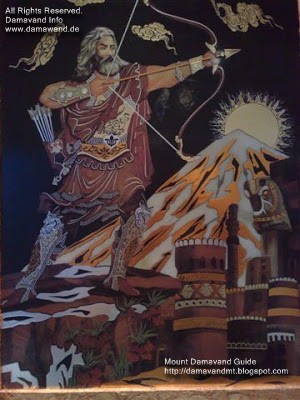
>Heroic Archer Arash the Archer
Arash Kamangir or Arash Tirandaz
Arash the Archer, Āraš-e Kamāngīr
Mount Damavand Basic Facts – FAQs
Damavand is a dormant stratovolcano, meaning it hasn’t erupted in recorded history but could potentially erupt in the future.
Mount Damavand is approximately 5,670 meters (18,600 feet) above sea level. It is the highest peak in Iran. See also Damavand Height GPS Measurement.
Mount Damavand is in northern Iran, about 80 km (50 miles) from Tehran, in the central Alborz mountain range.
Damavand is a symbol of strength and beauty in Iranian mythology, literature, and culture. It is featured in Persian folklore and is associated with Zoroastrianism and other ancient beliefs.
Yes, on clear days, Mount Damavand is visible from Tehran and adds to the city’s scenic view.
Yes, Damavand is home to Persian ibex, various birds, and other wildlife.
Yes, there are several glaciers on Damavand, although they have been retreating over the years due to climate change.
On exceptionally clear days, it is possible to see the Caspian Sea from the summit.
Yes, there are ski areas for mountaineering and ski touring. Nearby, Mount Doberar Ski Resort near Lasem village also offers skiing during winter.
Yes, Damavand is featured in Persian folktales and is often said to be home to mythical creatures. It is a central part of many ancient stories.
Yes, it is possible with proper planning. The mountain is about 80 km (50 miles) from Tehran.
During the climbing season, temperatures generally range from -10°C to 5°C (14°F to 41°F), depending on altitude.
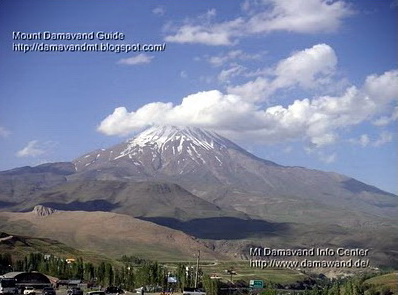
Highest Peak in the Middle East: 5,671 m / 18,605 ft
Highest volcano in Asia and the second highest in the Northern Hemisphere